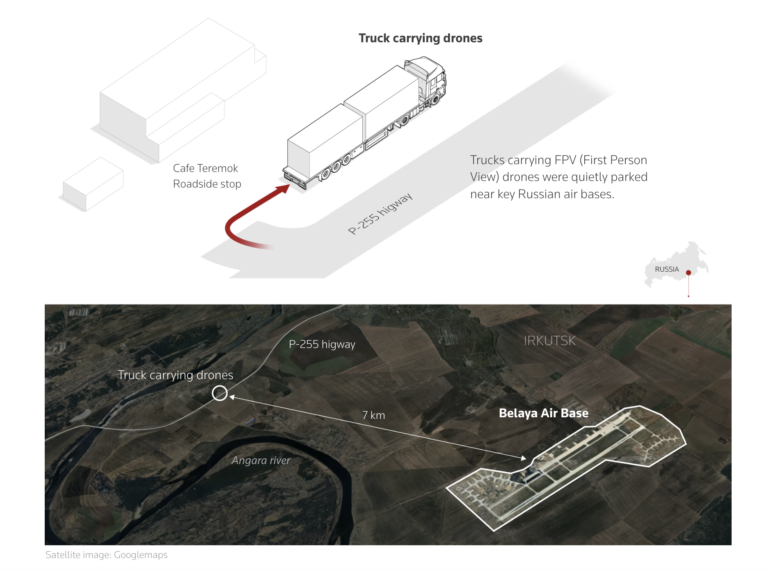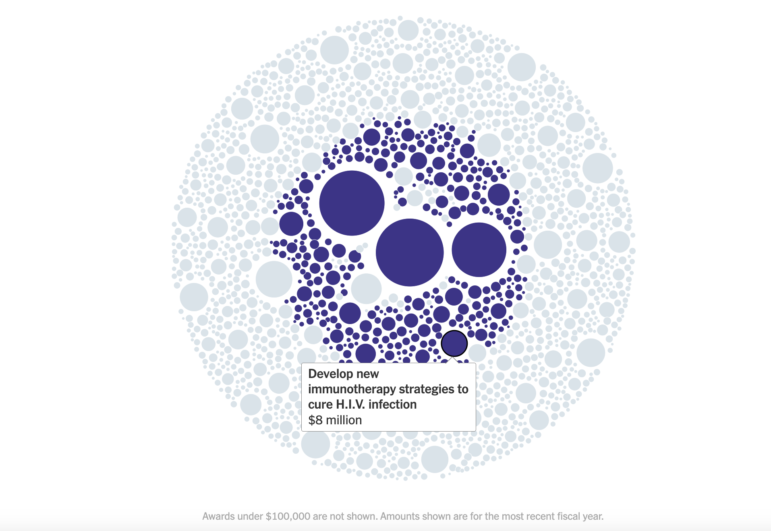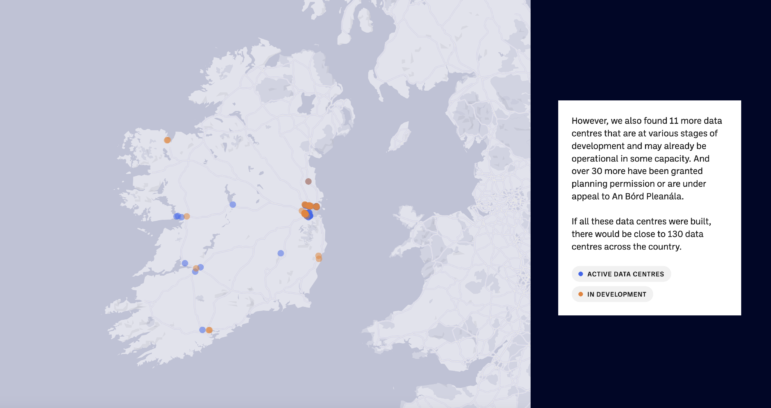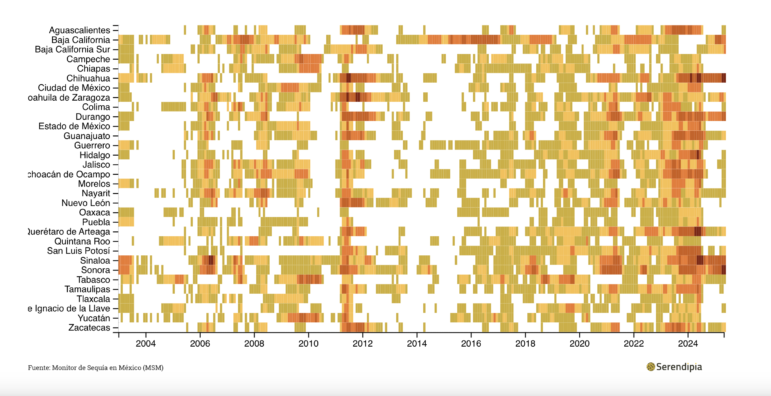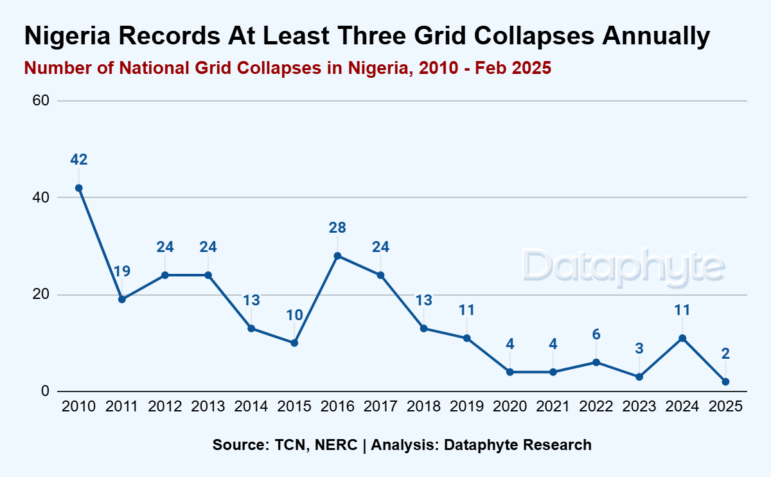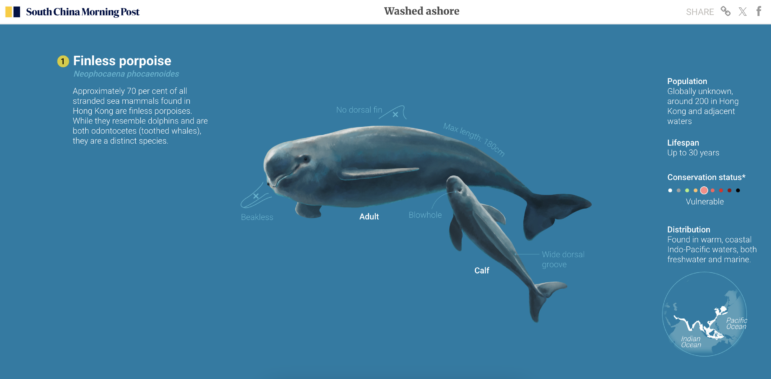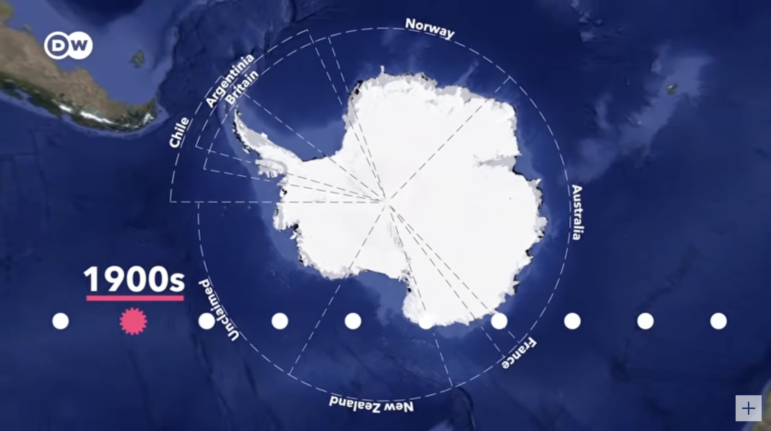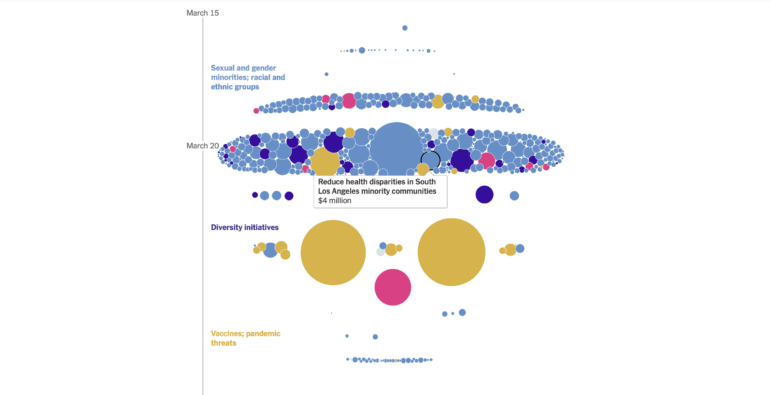

The New York Times gathered data on the cancelled and delayed grants issued by the NIH, creating a timeline to see how certain fields had been impacted by the funding cuts initiated by US President Donald Trump. Image: Screenshot, New York Times
Ukraine’s ‘Audacious’ Drone Strikes, Irish Data Centers, US Medical Funding Cuts
A bold Ukrainian drone strike deep inside Russian territory has raised new tensions between Kyiv and Moscow. Reuters unpacks the operation — which was planned for 18 months — and details how it was executed. This edition of our Top 10 in Data Journalism, which considered stories between May 24 and June 6, also highlights a New York Times investigation into cuts to medical research funding in the US; a mapping by The Journal of data centers in Ireland; and a video report on how geopolitical tensions are playing out in the Antarctic.
Ukrainian Drone Attack Hits Multiple Russian Air Bases
On June 1, an audacious Ukrainian attack inside Russia struck at least four Russian military air bases — including one deep inside the country in the Siberian region of Irkutsk, nearly 5,000 kilometers from Kyiv. The “Spider’s Web” operation was reportedly planned for 18 months and used 117 short-range “kamikaze” drones smuggled into Russian territory, hidden under the retractable roofs of trucks and launched from locations just a few kilometers away from military bases. In this piece, Reuters explains how the attack unfolded, with illustrations of the mechanism used, verified footage of the strikes, and satellite imagery of air bases showing aircraft destroyed or damaged — at least 12 strategic bombers are estimated to have been affected. The report details how the drones were remotely piloted over Russia’s cellular telecommunications network — using artificial intelligence in some cases to guide them to their targets when the signal was lost.
Cuts To Medical Research in the US
Shortly after returning to the White House, President Donald Trump ordered deep cuts to medical research funding. The New York Times analyzed data from the National Institutes of Health (NIH), interviewed dozens of affected researchers, and spoke with sources inside the agency to provide an overview of the nearly 2,500 NIH grants that have been terminated or delayed. According to the report, through April, the body had awarded $1.6 billion less than it did in the same period last year, and failed to distribute annual payments for nearly 1,100 grants. The report provides a series of interactive charts providing detail on each canceled grant — with cuts affecting research on Alzheimer’s, vascular health, cancer, and substance use, as well as studies related to maternal mortality and gender minority groups, according to the Times. To classify the research areas, the team used a large language model to summarize grant goals and categorize topics.
Fancy a Drive of the Monaco Grand Prix Circuit?
In this special from Le Figaro, the reader is transported inside a Formula 1 car driving the Monaco Grand Prix circuit. The infamous race — held since 1929 on the streets of the city-state located in the South of France — is narrated by the former French driver Jean Alesi who in 1990 had an epic duel with Brazilian racing driver Ayrton Senna. The Fig data team combine Alesi’s commentary with images courtesy of the Automobile Club of Monaco: the result is a game-like interactive piece that details the perils and joys of each section of this unique 3.37-kilometer track. From the starting place in front of a chapel in honor of Sainte-Dévote, the route passes in front of one of the most famous casinos in the city and the port, and through famous curves, such as the Tabac, which has barely changed in almost a century of racing, to the Fairmont hairpin bend. “F1 drivers are like skiers,” Alesi told the reporters, always having “to anticipate the next turn.”
Mapping Ireland’s Data Centers
The evolution and popularization of artificial intelligence has brought with it a need for huge amounts of data to process requests to ChatGPT or DeepSeek — that’s where data centers come in. In this interactive visual investigation, Irish online newspaper The Journal maps all of Ireland’s data centers — 89 operational, with 40 more in development — by examining more than 25 years of local authority planning records to identify facilities and geolocate them with satellite imagery. According to The Journal, plans to build so many new data processing centers are worrying because data centers have a huge environmental cost. To keep social media running around the clock, they need to use a large number of backup and emergency generators that run mostly on fossil fuels. According to the report, generators connected to Irish data centers have released the equivalent of the smoke emitted by more than 4,500 cars per year since 2017.
Coastal Cities Are Sinking
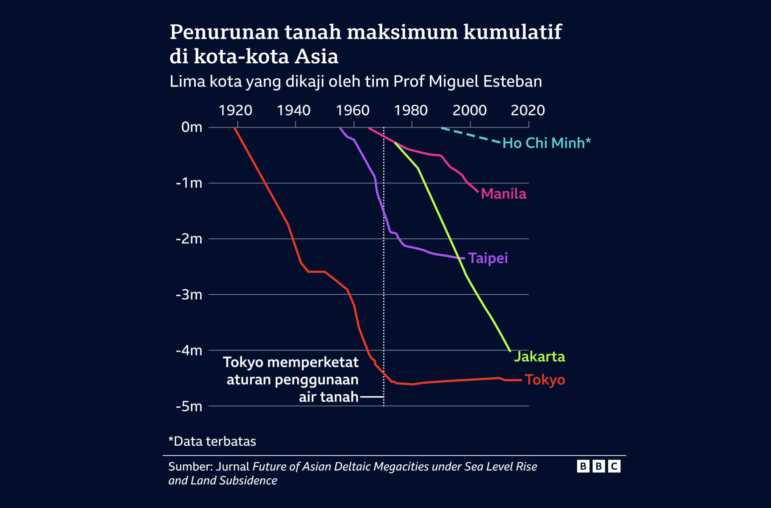
The cumulative land subsidence (in meters) in five Asian cities in the study by Nanyang Technological University (NTU) in Singapore. Image: Screenshot, BBC Indonesia
Dozens of coastal areas in several countries are vulnerable to rising sea levels due to climate change and land subsidence, according to a study by Nanyang Technological University (NTU) conducted in 48 coastal cities around the world — where almost 76 million people live. In this special report, BBC Indonesia presents the results with visual resources and testimonies from field reports. You can select a city, such as New York, Rio de Janeiro, or Seoul, to see on the city map the rates of subsidence in different parts of the city, along with an explanation of the causes. According to the report, one of the main causes of this subsidence is the extraction of groundwater, which is used by more than half of the world’s households for domestic needs such as drinking and irrigation. An animation shows how excessive pumping of groundwater can cause soil compaction and collapse and, over time, the subsidence of buildings and structures.
Water Shortages Become Routine in Mexico
Drought has been a constant throughout Mexico’s history, but today, with climate change intensifying phenomena such as El Niño, its consequences have never been so worrying, according to data journalism outlet Serendipia, which investigates when water shortages become routine. Maps show that, on May 15, 2025, 49.4% of Mexico’s territory was suffering from some degree of drought, according to the National Water Commission (CONAGUA). In communities such as García, in the state of Nuevo León, the water crisis is already affecting the health of its residents and was indirectly responsible for the death of a four-year-old child. In the last decade, the region has seen a 4.7-degree increase in the average maximum monthly temperature in April alone. The report provides a graph of the level of drought throughout Mexico between 2003 and 2025, by state; a map of the 10 reservoirs with the least water in April of this year; and graphs of the average monthly percentage of filling of the 125 largest dams in Mexico since 2008 and of precipitation in milimeters by state, in April of this year.
Explaining Election Losses for Australia’s Greens
Australia went to the polls last month to elect members of the country’s 48th Parliament. In this interactive piece, the Guardian analyzes what went wrong for the Australian Greens political party, which lost three lower house seats, including Melbourne — that of its former leader, Adam Bandt. How could a party with such a high share of the national vote — in third place behind Labor and the Liberals — get so few seats? The report identifies three factors: While other parties ran a few candidates in a few electorates and won almost all of them, the Greens ran one candidate in every seat, so while they won more votes in total, they were heavily dispersed. The report also maps how the Melbourne seat was lost, explaining how the redrawing of the city’s electoral boundaries affected the results. Finally, the loss of two Brisbane seats was related to so-called three-party contests and a ranked preference voting system that yielded better results for Labor.
Nigeria’s Electricity Woes
According to Dataphyte, Nigeria has one of the lowest levels of electricity access in the world, ranking 188th out of 212 countries based on per capita electricity consumption. US Energy Information Administration (EIA) data from 2023 shows that each Nigerian consumes on average 0.18 megawatt-hours (MWh) annually — significantly below the figures of high-performing countries such as Iceland (51.92 MWh) and below the global average of 3.67 MWh. According to the report, nearly two in five Nigerians — around 90 million people — still don’t have access to the national electricity grid, which is also plagued by blackouts and grid collapses. In response, many Nigerians have turned to sourcing their own energy, using solar installations and gasoline or diesel generators, which could pose long-term sustainability problems.
Washed Ashore in Hong Kong
According to this story in the South China Morning Post, Hong Kong is home to more than 7.5 million people and its surrounding waters host around 5,900 marine species, including dolphins, porpoises, and whales. Data journalists explored the 670 recorded stranding incidents over the last two decades, mapping where the animals washed ashore and charting water depth in those locations, charting the marine animals that have been stranded year by year, and documenting how the peak stranding periods “consistently occurred during winter or cooler seasons.” Reporters said the marine life around Hong Kong was facing increased threats from boats, fishing nets, and pollution, and hypothesized that lower strandings during the COVID-19 pandemic were due to decreased human and marine activity.
Reporters logged vessel density per hour in the waters around Hong Kong, and E. coli levels, which can impact Chinese white dolphins. A data-rich and graphically textured piece, drawing together material from the SCMP’s own archives, government departments, conservation agencies, and university research.
Jostling for Antarctica?
With the world’s attention focused on disputes over the Arctic, DW Planet produced a video report detailing how some countries have been quietly gaining ground in the southernmost region of the globe, Antarctica. The video explains that the reasons for this interest are varied, but revolve around resources, such as fresh water (with around 75% of the world’s reserves stored in the Antarctic ice sheets), mineral resources, and the continent’s sizable oil reserves. Access to these is restricted or prohibited by international agreements which have nullified territorial claims, banned military activities and mining, and established fishing limits around the continent — and established a principle by which scientific research on the continent is shared. While the agreement to share scientific research has been trailblazing, according to the report there are myriad threats facing the region: from the construction of many national bases over the years in the region, many of which have technologies that can be militarized, to the increase in illegal fishing around the continent in the last 10 years, especially of krill, and from climate change to the stark increase in tourism in the region.
 Ana Beatriz Assam is GIJN’s Portuguese editor and a Brazilian journalist. She has worked as a freelance reporter for the newspaper O Estado de São Paulo, mainly covering stories featuring data journalism. She has also worked for the Brazilian Association of Investigative Journalism (Abraji) as an assistant coordinator of journalism courses.
Ana Beatriz Assam is GIJN’s Portuguese editor and a Brazilian journalist. She has worked as a freelance reporter for the newspaper O Estado de São Paulo, mainly covering stories featuring data journalism. She has also worked for the Brazilian Association of Investigative Journalism (Abraji) as an assistant coordinator of journalism courses.





